EVGA 790i SLI FTW Digital PWM Motherboard Review
790i FTW Digital Board Images
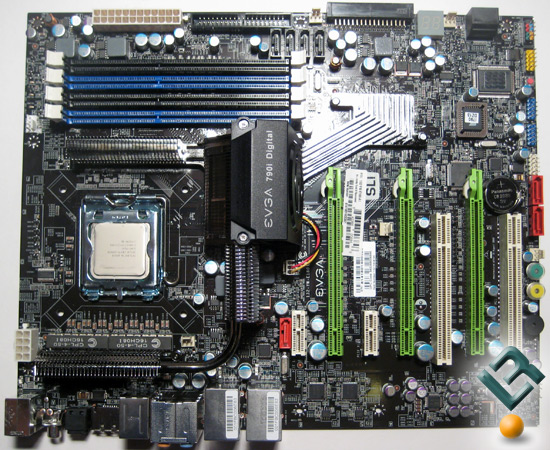
If you aren’t looking closely, the 790i SLI Ultra and the 790i SLI FTW Digital could look identical. The differences start to become apparent when you look a bit closer at the individual components. The inclusion of solid capacitors and an 8-phase digital PWM have bolstered an already strong power system. Ferrite chokes have replaced the iron chokes which further strengthens the power delivery.
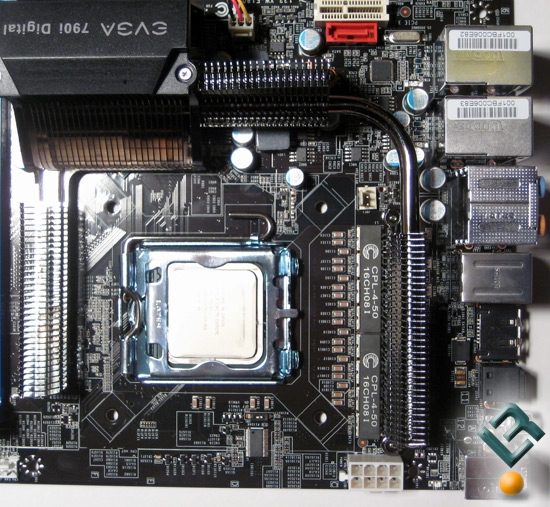
The CPU socket of the eVGA 790i FTW Digital is impeccably clean due to its digital PWM. It is this digital PWM that is the single difference between the vanilla 790i FTW and the 790i FTW Digital. In addition to being able to handle a greater amount of current, this digital PWM is more efficient and responds faster to load fluctuations than its analog counterpart. For those few consumers that utilize sub-ambient cooling, this is one of the easiest boards to insulate due to the low-profile capacitors.
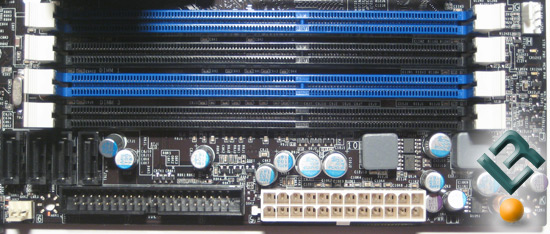
The DDR3 memory slots are powered via a traditional two-phase PWM. Four of the nine SATA connectors are arranged next to the DIMM slots along with the PATA connector and 24-pin ATX power connector. If you intend on overclocking your memory it’s suggested to use the black DIMM slots for DDR3-1600+ speeds.
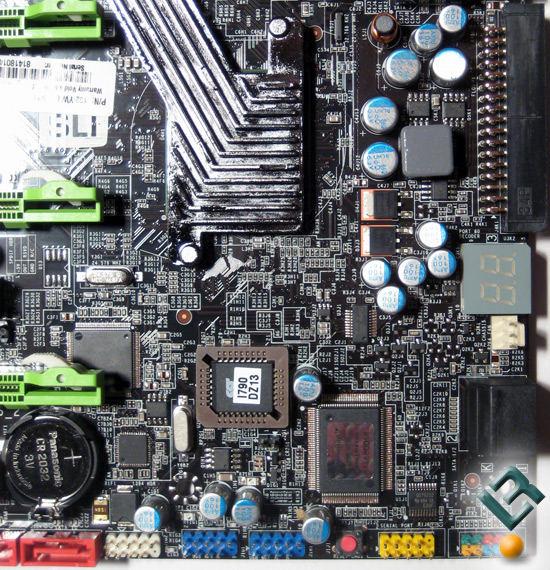
The area around the south-bridge is crowded as is the norm. There are two additional SATA ports provided by the south-bridge and two SATA ports provided by the JMicron JMB362 controller. The POST debug LED will prove to be quite useful for overclockers. Hopefully nobody will need to do this but the socketed BIOS chip is a nice touch just in case you do toast a BIOS.
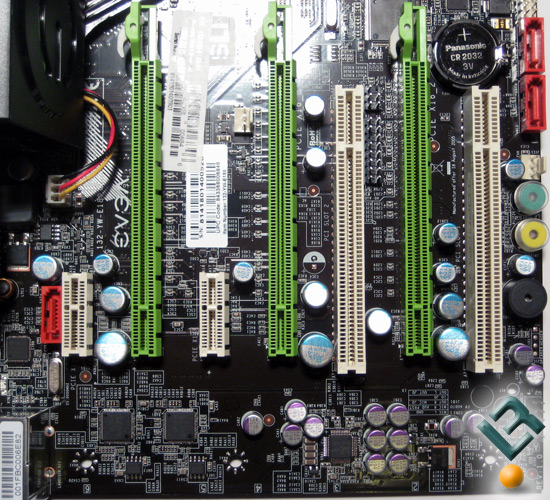
The expansion slots are arranged specifically to support Tri-SLI with dual-slot cards. There are three PCIe x16 slots, two PCIe x1 slots, and two PCI slots. For most individuals there should be a sufficient amount of expansion slots as even with standard SLI there’s sufficient space for a PCIe x1 and PCI card. Tucked away at the bottom of the board are the power and reset buttons along with the onboard speaker. On the edge of the board are the two Realtek RTL8211C gigabit Ethernet controllers.

Comments are closed.